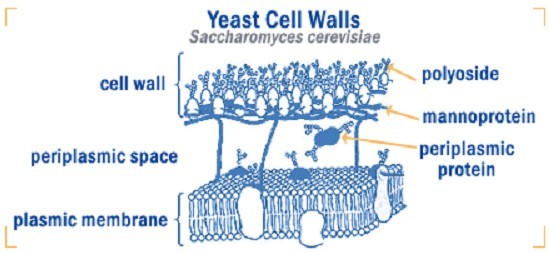1. What kind of yeast product could be used in animal nutrition?
Yeasts have been used in feed for many years. Both the Bovine Spongiform Encephalopathy crisis (mad cow disease), and the increasing concern of customers about their diet have lead to an increased use of “clean” protein sources, such as yeast, in animal feed.
After years of development, particularly extensive research in recent years, variety of yeast and its derivative products in animal nutrition have been widely used, including:
Active Yeast, a kind of probiotic yeast;
Selenium Yeast, as a source of organic selenium;
Autolyzed Yeast, which is sometimes called Yeast Autolysate, as a kind of natural growth promoter.
Yeast Cell Wall, as an effective immune enhancer.
2. What is the difference between the active yeast for feed and for bakery?
Both are active yeasts with strong activity, which, however, are originated from different strains and by different fermentative techniques.
Feed Active Yeast possesses outstanding adaptability on the low pH condition of the gastrointestinal tract works as a probiotic product. It helps to regulate intestinal microflora and improve feed digestibility.
Baker’s Yeast is active used for the production of baked food, such as bread and buns. It is good at gas production and helps to make the food fluffy and savory.
3. What’s the difference between Active Feed Yeast and Brewer’s Yeast?
Active feed yeast is dried pure yeast product in dormant period without any carrier, within more than 80% is live and the total number of viable cells is more than 15 billion per gram.
Brewer’s Yeast is the yeast byproduct of beer fermentation. Compared to active feed yeast, the Brewer Yeast contains few live cells and be used as protein source in feed.
4. Definition of Selenium Yeast.
It is a pure yeast product contains high concentration of selenium.
Under appropriate conditions, yeast (Saccharomyces cerevisiae) accumulated large amount of inorganic selenium, and incorporated them into organic compounds by liquid fermentation process.
The content of organic selenium reaches to 2000PPM.
5. Why should the selenium be supplemented?
As a essential trace element, selenium deficiency is closely related to the incidence of more than 40 kinds of human diseases, such as cardiovascular disease, diabetes, immune deficiency, Keshan disease and even cancer. More and more attentions have been paid on this problem in recent years.
Soil selenium deficiency is a common problem in the world. There are more than 40 countries and/or regions around the world that face this problem. Food supply alone can not meet the needs of selenium in animals and therefore additionally supplement is necessary.
6. What’s the difference between organic and inorganic selenium?
Selenium occurs naturally in a number of inorganic forms, including selenide-, selenate-, and selenite-containing minerals.
In living systems, selenium is found in the amino acids selenomethionine, selenocysteine, and methylselenocysteine. In these compounds, selenium plays a role analogous to that of sulfur. Another naturally occurring organic selenium compounds is dimethyl selenide. The selenium yeast, rich in selenomethionine and selenocysteine, is an ideal organic selenium source.
The organic selenium exhibit higher toxicological safety, physical activity and absorption rate than inorganic selenium.
7. What’s Yeast Cell Wall?
Yeast Cell Wall represents 26 – 32 % of the dry weight of Saccharomyces and other kinds of yeast. This Cell Wall is a structural component and gives the yeast its shape and rigidity.

8. What’s the functional ingredients in Yeast Cell Wall?
Yeast Cell Wall is a non-specific stimulator of the immune system of both human and animals.
Yeast Beta-Glucan – an ingredient of Yeast Cell Wall -can stimulate the cells of the immune system (macrophages) and help to overcome bacterial infections.
Mannanoligosaccharide (MOS), another ingredient of Yeast Cell Wall, has been demonstrated to bind to pathogenic bacteria in the gut and then carry them through and out of the intestinal tract and prevent diarrhea.
9. What’s the difference between Autolyzed Yeast and Yeast Extract?
Both are resulted from the selfdigestion of the proteins and other constituents of the yeast by the enzymes contained in the yeast cells.
However, there are two main differences between Yeast Extract and Autolyzed Yeast:
• The autolysis stage of the production process is shorter for Autolyzed Yeast compared to Yeast Extract, resulting in a partial hydrolysis of the yeast constituents.
• Cell Walls are not removed from Autolyzed Yeast, resulting in a product which is only partially soluble in water.
10. What’s the difference between Autolyzed Yeast and Active Yeast?
Active Yeast is the yeast product with the whole activity and worked as probiotics via metabolism and multiplies.
Autolyzed Yeast is inactive yeast product, used as a source of high quality proteins, peptides and amino acids and nucleotides.
